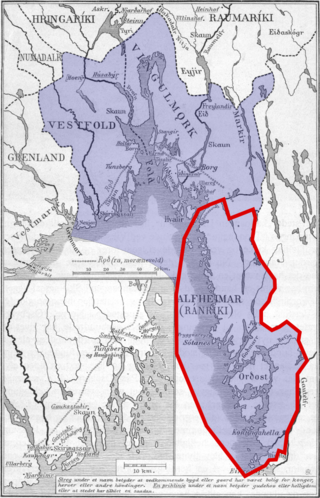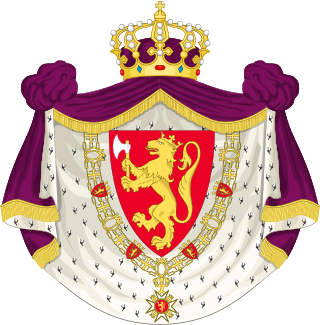
Danish is a North Germanic language spoken by about six million people, principally in and around Denmark. Communities of Danish speakers are also found in Greenland, the Faroe Islands, and the northern German region of Southern Schleswig, where it has minority language status. Minor Danish-speaking communities are also found in Norway, Sweden, the United States, Canada, Brazil, and Argentina.

Norwegian is a North Germanic language spoken mainly in Norway, where it is an official language. Along with Swedish and Danish, Norwegian forms a dialect continuum of more or less mutually intelligible local and regional varieties; some Norwegian and Swedish dialects, in particular, are very close. These Scandinavian languages, together with Faroese and Icelandic as well as some extinct languages, constitute the North Germanic languages. Faroese and Icelandic are not mutually intelligible with Norwegian in their spoken form because continental Scandinavian has diverged from them. While the two Germanic languages with the greatest numbers of speakers, English and German, have close similarities with Norwegian, neither is mutually intelligible with it. Norwegian is a descendant of Old Norse, the common language of the Germanic peoples living in Scandinavia during the Viking Age.

Scandinavia is a subregion in Northern Europe, with strong historical, cultural, and linguistic ties between its constituent peoples. Scandinavia most commonly refers to Denmark, Norway, and Sweden. It can sometimes also refer more narrowly to the Scandinavian Peninsula. In English usage, Scandinavia is sometimes used as a synonym for Nordic countries. Iceland and the Faroe Islands are sometimes included in Scandinavia for their ethnolinguistic relations with Sweden, Norway and Denmark. While Finland differs from other Nordic countries in this respect, some authors call it Scandinavian due to its economic and other similarities.

The Norsemen were a North Germanic ethnolinguistic group of the Early Middle Ages, during which they spoke the Old Norse language. The language belongs to the North Germanic branch of the Indo-European languages and is the predecessor of the modern Germanic languages of Scandinavia. During the late eighth century, Scandinavians embarked on a large-scale expansion in all directions, giving rise to the Viking Age. In English-language scholarship since the 19th century, Norse seafaring traders, settlers and warriors have commonly been referred to as Vikings. Historians of Anglo-Saxon England distinguish between Norse Vikings (Norsemen) from Norway who mainly invaded and occupied the islands north and north-west of Britain, Ireland and western Britain, and Danish Vikings, who principally invaded and occupied eastern Britain.
Bokmål is an official written standard for the Norwegian language, alongside Nynorsk. Bokmål is the preferred written standard of Norwegian for 85% to 90% of the population in Norway. There is no nationwide standard or agreement on the pronunciation of Bokmål.
Nynorsk is one of the two official written standards of the Norwegian language, the other being Bokmål. From 12 May 1885, it became the state-sanctioned version of Ivar Aasen's standard Norwegian language parallel to the Dano-Norwegian written language (Riksmål). Nynorsk became the name in 1929, and it is after a series of reforms still a variation which is closer to Landsmål, whereas Bokmål is closer to Riksmål and Danish.
The Danish and Norwegian alphabets, together called the Dano-Norwegian alphabet, is the set of symbols, forming a variant of the Latin alphabet, used for writing the Danish and Norwegian languages. It has consisted of the following 29 letters since 1917 (Norwegian) and 1948 (Danish):

A thing, also known as a folkmoot, assembly, tribal council, and by other names, was a governing assembly in early Germanic society, made up of the free people of the community presided over by a lawspeaker. Things took place at regular intervals, usually at prominent places that were accessible by travel. They provided legislative functions, as well as being social events and opportunities for trade. In modern usage, the meaning of this word in English and other languages has shifted to mean not just an assemblage of some sort but simply an object of any sort.

The Paus family is a Norwegian family that first appeared as members of the elite of 16th-century Oslo and that for centuries belonged to Norway's "aristocracy of officials" as priests of the state church, judges and other higher government officials, especially in Upper Telemark. Family members later became involved in shipping, steel and banking. The family is particularly known for its close association with Henrik Ibsen.

In various cultures, a middlename is a portion of a personal name that is written between the person's first given name and their surname. A middle name is often abbreviated and is then called middle initial or just initial.

Viken, or Vika, was the historical name during the Viking Age and the High Middle Ages for an area of Scandinavia that originally surrounded the Oslofjord and included the coast of Bohuslän. Its definition changed over time, and from the Middle Ages, Viken included only Bohuslän.
The mediopassive voice is a grammatical voice that subsumes the meanings of both the middle voice and the passive voice.

The Norwegian royal families are the families of either previous or present Norwegian monarchs. The current family who holds the throne are members of the House of Glücksburg and ascended the throne after the election of Prince Carl during the dissolution of the Swedish-Norwegian union in 1905.

The Norwegian monarch is the head of state of Norway, which is a constitutional and hereditary monarchy with a parliamentary system. The Norwegian monarchy can trace its line back to the reign of Harald Fairhair and the previous petty kingdoms which were united to form Norway; it has been in unions with both Sweden and Denmark for long periods.

Beitstad is a village in the municipality of Steinkjer in Trøndelag county, Norway. The village is located along the Beitstadsundet strait at the end of the Beitstadfjorden at the inner end of the Trondheimsfjord, about 5 kilometres (3.1 mi) southwest of the village of Vellamelen and about 20 kilometres (12 mi) north of the town of Steinkjer. The village was the administrative centre of the old municipality of Beitstad which existed from 1838 until 1964 when it was merged into Steinkjer.

Hygge is a word in Danish and Norwegian that describes a cosy, contented mood evoked by comfort and conviviality. As a cultural category with its sets of associated practices hygge has more or less the same meaning in both places and in both languages; however, the emphasis on hygge as a core part of Danish culture is a recent phenomenon, dating to the late 20th century. In the 21st century, the concept has also been familiarized abroad.

Hans Christian Ulrik Midelfart was a Norwegian Lutheran minister who served as a representative at the Norwegian Constitutional Assembly in 1814.
Celina Midelfart is a Norwegian businesswoman.

Junker is a noble honorific, derived from Middle High German Juncherre, meaning 'young nobleman' or otherwise 'young lord'. The term is traditionally used throughout the German-speaking, Dutch-speaking and Scandinavian-speaking parts of Europe. It was also used in the Russian Empire due to Baltic German influence, up until the Russian Revolution. The term is currently still in use by the Georgian Defense Forces for student officers of the National Defence Academy.
Celina is a feminine given name derived from the Roman name Cecilia, referring to a woman from the Caecilia gens. Alternately, it is considered a form of the name Marceline, a French feminine form of the name Marcel. The French version of the name is Céline. The name has also been considered a variation of the name Selene, the Greek goddess and personification of the Moon, and its variants Selena and Selina.
![Mads Jensen Medelfar [da] (1579-1637) with his family. He was from Middelfart in Denmark and became Bishop of Lund Mads Jensen Medelfar med familj (fran epitafium).jpg](http://upload.wikimedia.org/wikipedia/commons/thumb/a/a5/Mads_Jensen_Medelfar_med_familj_%28fr%C3%A5n_epitafium%29.jpg/220px-Mads_Jensen_Medelfar_med_familj_%28fr%C3%A5n_epitafium%29.jpg)













